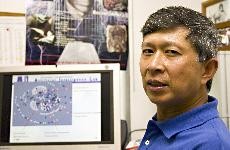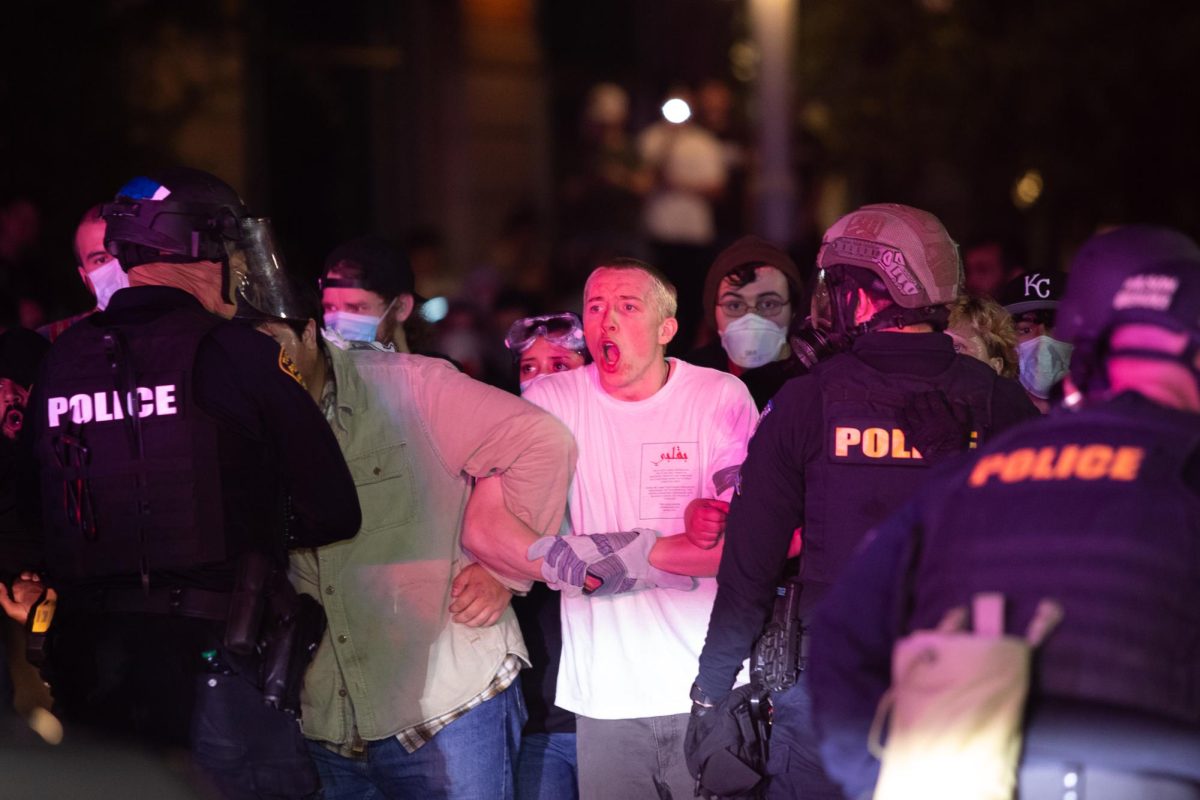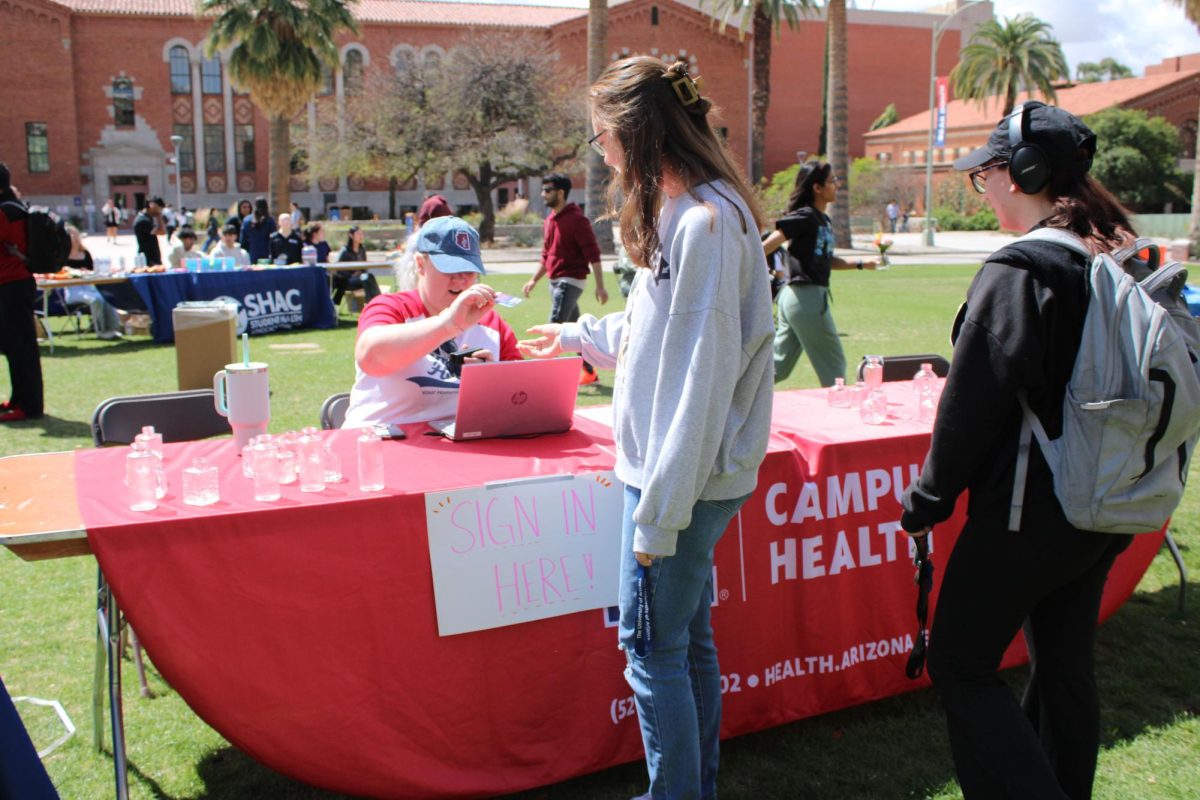Anyone who has been on the World Wide Web knows that there are millions, possibly billions, of pages out there, just waiting with scads of information ready for anyone who knows where to look.
While there are many public search engines online, there is a different sort of search taking place right here at the UA: the Dark Web project, which explores the use of the Web for illegal purposes.
The Dark Web is named so because it is the part of the Web which is used for alternative purposes, said Hsinchun Chen, director of the management information systems department’s Artificial Intelligence Laboratory.
Such use of the Internet is often illegal, Chen said. It is associated with darkness because the people who use it are often hiding information.
In this case, the people involved are terrorists.
The project combines terrorist-generated data mined using the Dark Web portal and then studies “”advanced and new methodologies for predictive modeling, terrorist (social) network analysis, and visualization of terrorists’ activities, linkages, and relationships,”” according to “”The Dark Web Portal: Collecting and Analyzing the Presence of Domestic and International Terrorist Groups on the Web,”” a paper co-written by Chen.
In another academic paper, “”Content Analysis of Jihadi Extremist Groups’ Videos,”” Chen, Arab Salem and Edna Reid wrote about the content and use of 20 videos collected from terrorist Web sites.
Eighteen involved violent attacks, according to the paper. Nearly all involved some form of instruction or planning in how to execute attacks, suicide bombing and taking hostages.
Results from the paper also show that 60 percent of the targets in the videos were Western military vehicles or convoys, while the other 40 percent were targeting military bases, barracks and infantry soldiers.
The paper concluded that the videos were used for diverse purposes, including training, fundraising and motivation, while appealing to the viewer’s emotions and spirituality.
Despite the abundance of facts, Chen said that they are not intelligence analysts.
“”We really are doing this as scientific research,”” Chen said, adding that the papers produced by the lab do not publish information on specific terrorists.
The Artificial Intelligence Lab has the largest collection of Dark Web data in the world, which may then be analyzed by intelligence agencies.
What is special about the UA’s Dark Web project is that, in addition to using the most advanced techniques in the world, it can process millions of documents in only a few hours, Chen said. In the past, analysis was done manually.
The project has between nine and 11 undergraduate, masters and doctorate students working with the data, which requires no security clearance.
The researchers do not want to get involved with analysis of the data because it is unfair to the students working in the lab, Chen said.
“”The students are actually the backbone of the project,”” he said, pointing out that the project uses computer programs that were developed by students.
Because of the sensitive nature of the project, Chen declined to allow the Arizona Summer Wildcat to interview the students.
The Dark Web portal arose from Coplink, another of Chen’s projects, which he said has been called the “”Google for cops.””
Coplink is an information-sharing network used in 20 states, according to its Web site. It is meant to help law enforcement officers solve crimes more quickly and across
jurisdictions.
Coplink was so successful, Chen said, he founded a “”university spin-off”” company, Knowledge Computing Corporation, to market it. Coplink is now used by 200 law enforcement agencies around the nation, according to the Artificial Intelligence Lab Web site.
Chen said that Dark Web is essentially the “”Google for the intelligence community, “” and began after the university was approached by “”federal agencies,”” though he would not identify them.
The Wildcat used Google to look up some terrorist Web sites, just to see what could be found casually.
The Islamic Army of Iraq site was found, identified as a terrorist Web site on the Search for International Terrorist Entities Web site.
On one of its pages – amidst religious sentiments including “”Allah akbar,”” which means “”God is the greatest,”” according to multiple sources – a little animated picture of a smiley face with arms and legs shoots a large machine gun in an almost
gleeful frenzy.
On the Al-Aqsa Martyrs Brigade Web site, also found on SITE, photos of young men line its sides, celebrating their deaths during attacks on their enemies.
Even though anyone can conduct searches on the Web, Chen said there is a crucial different with the Dark Web: terrorists are hiding content. The Dark Web project uses advanced techniques to find what’s hidden and extract it for later analysis.
The project has many ways to understand why terrorists do what they do, including how emotions come into play and how the organizations are linked.
With the Internet so accessible, it’s only logical that terrorism is sprouting up in many different forms. The Dark Web project may be the first step in countering the speed at which terrorists can access often harmful information.









